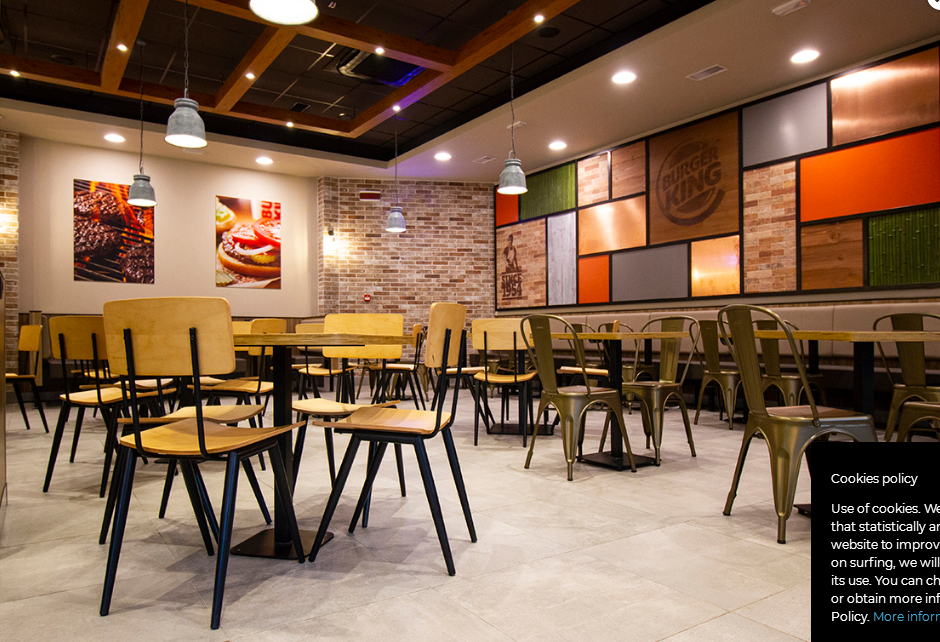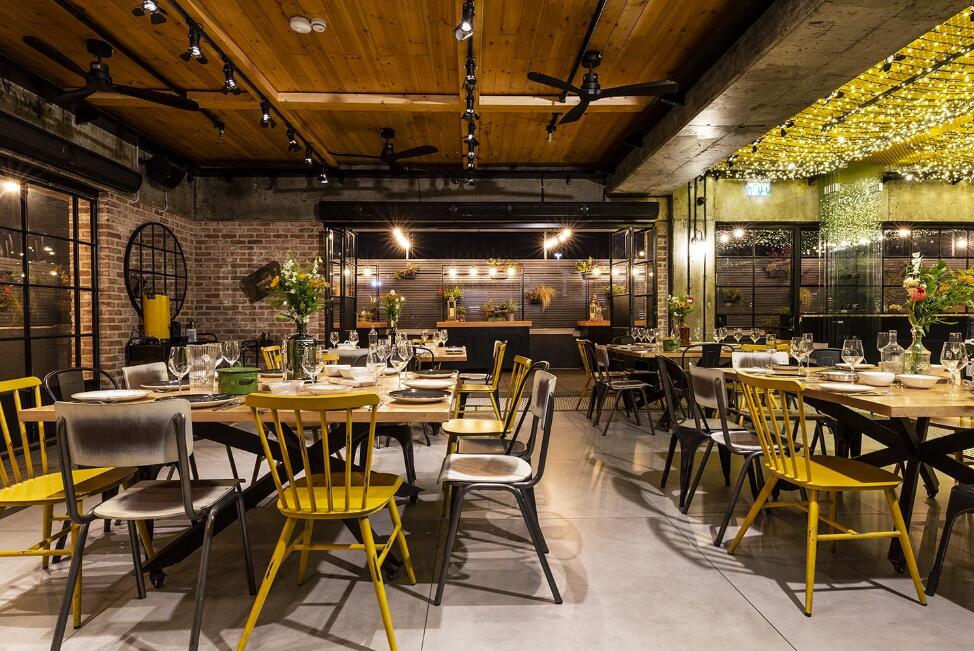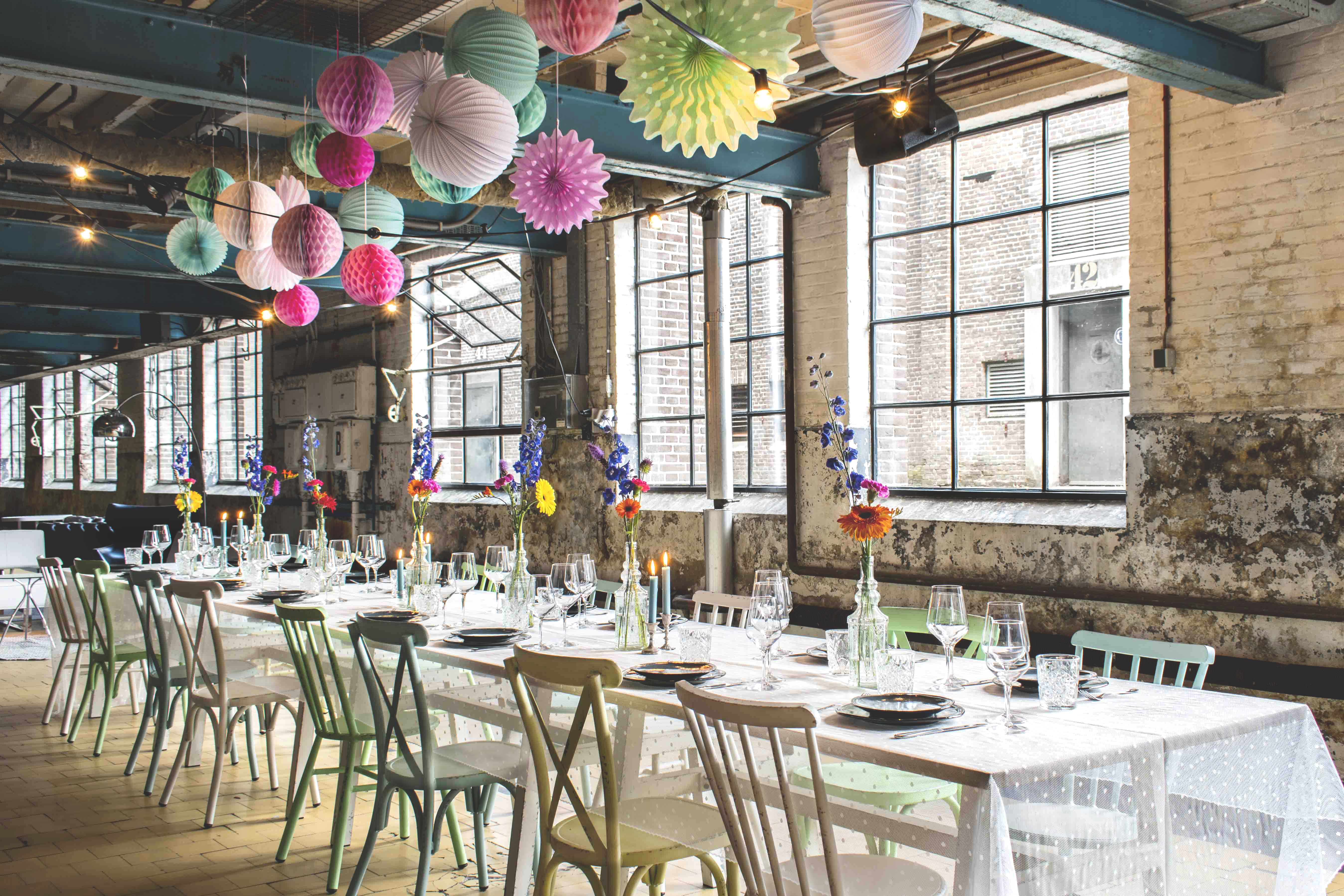The restaurant decoration and aesthetic is a vital aspect of defining a brand is known by everyone.We CDG forcus with restaurant furniture for more than 16 years and work with restaurant designers with their fingers on the pulse of today’s trends. CDG furniture would like to share about what restaurant chairs to look for in four types of restaurant: fast casual, casual dining, cafes, and food courts, and cafeterias.
 1. FAST CASUAL
1. FAST CASUAL
On the spectrum between fast food and casual dining, fast casual restaurants have rocketed into the spotlight in the past decade as health-conscious consumers began searching for a dining experience with the convenience of fast food, but with the transparency of home cooking. Fast casual restaurants usually don’t include table service, opting instead for a fast food-like experience in which the customer orders at a counter then finds a seat in the dining room.
But while fast food brands scramble to reinvent themselves as hip eateries, fast casual restaurants were created with trendiness built in. With their main target market made up of Millennials (ages 20-35), fast casuals often build their brands on designs and messages that resonate with a young audience. Take, for example, the popular Mexican-inspired chain Chipotle, whose interiors are practically the encyclopedia entry for industrial chic, or community-focused salad chain Sweetgreen, whose clean, modern look encourages visitors to focus on the experience.
When choosing restaurant chairs for a fast casual concept, creating a cohesive image is key. A restaurant’s furniture is just as much a part of its brand as the name, logo, and even the food, so you should make sure that each aspect speaks to the others. Stick with designs that are clean and contemporary, and make sure durability and ease of maintenance are at the top of your requirements list: fast casuals tend to have short visits and high traffic, and without table service, employees may not notice as quickly when spills occur.
2.CASUAL DINING
Casual dining restaurants, including family dining, arose in the late 1960s in response to the growing number of dual-income families looking for the experience of sitting down to a delicious meal together without the time investment required to cook at home. While some speculate that the latest trends mean that people are spending less time and money on casual dining, these restaurants offer a complete package: great food at affordable price points with table service and an enjoyable atmosphere.
Because a complete package is what casual dining patrons have come to expect, it’s critical to get the restaurant furniture just right. Casual restaurants often make their biggest profit margins on alcoholic beverages and desserts, which means customers need to have the incentive to stay in their seats. Upholstered restaurant chairs layer on the comfort and style, especially with a durable fabric that fits the colors and patterns used in other aspects of the restaurant’s branding. Another important factor to take into account is the range of seating needs a casual dining restaurant should accommodate: choosing furniture and creating a floor plan that allows for easy wheelchair access, high chairs, and booster seats encourages families to visit and return. While the sky’s the limit on choosing an aesthetic for casual dining — think of the difference between Olive Garden and Red Robin — be sure to choose chairs that look and feel of the high quality that will set the restaurant apart.

3.CAFE OR COFFEE HOUSE
Cafes and coffeehouses are often synonymous in the popular imagination, and with good reason. Traditionally, American cafes will serve light fare, such as pastries and sandwiches in addition to hot drinks, whereas coffeehouses focus on specialty coffee and espresso. In reality, however, the difference comes down to branding and perception. Regardless of whether a business is known as a cafe or coffeehouse, customers expect more or less the same experience: order at a counter, pick up their (often customized) drink or food, and choose between dashing out the door or sitting down for a few hours of relaxation or productivity.
From giants like Starbucks to the corner small-batch roastery, the overwhelming image of cafes and coffeehouses is a space that’s warm, quiet, and personal. Offering a variety of seating options, such as a bar lined with stools, a few bistro tables, and couches or lounge chairs allows customers to choose the experience that makes them feel welcome. And, of course, for the students, business people, and other under-caffeinated, overworked individuals, supplying plenty of electrical outlets and wifi access brings an incredible amount of value to each visit.
4.FOOD COURT OR CAFETERIA
The main goal for designing a dining space for a food court or cafeteria is to create a design that is cohesive, attractive, and easy to maintain. For businesses and schools, cafeterias are gathering places where people can take a break and enjoy a meal, so incorporating branding into the furniture can help build positive associations. For either space, durability is a must, as high volumes and short visits means chairs and tables are constantly being shuffled around. Varying seating options and chair height can help make the most of the dining area for larger capacities.
Product Suggestions: Brady Communal Table, Harper 4-Leg Chair, Hurdle Low Stool
By understanding customer expectations for restaurant concepts, you can create a furniture design for your restaurant that builds your brand, rather than detracts from it. Including concept-specific considerations into your search for restaurant chairs, in addition to quality and aesthetic, can ensure that your investment pays for itself in contributing to a great customer experience.


